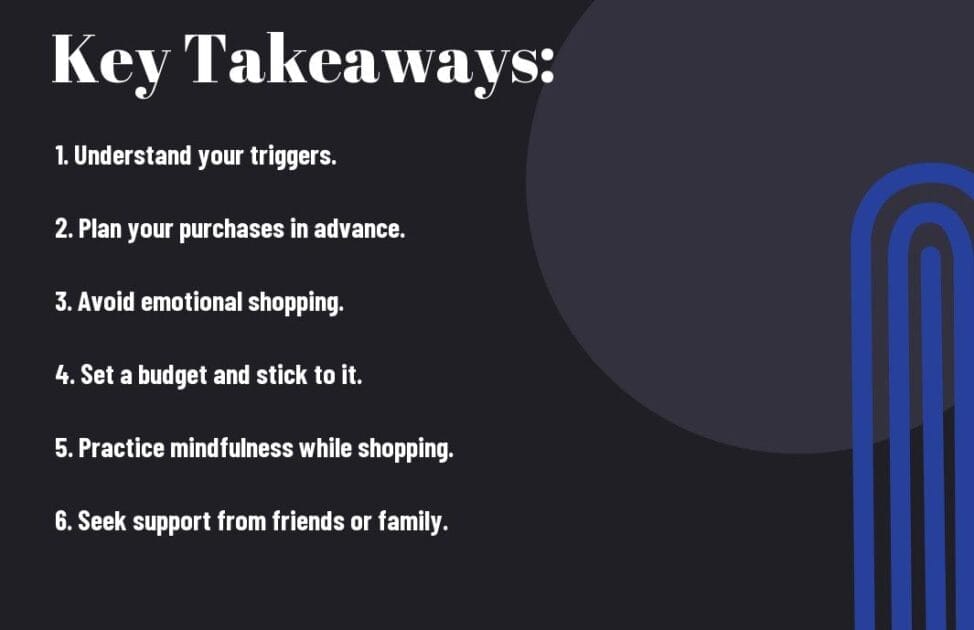Have you ever found yourself succumbing to the irresistible allure of a flashy display or a limited-time offer, only to regret your purchase later? You’re not alone. Impulse buying is a common phenomenon that affects consumers across the globe, leading to unnecessary spending and financial stress. Understanding the psychological triggers behind impulse buying is crucial to overcome the urge and start saving money.
In this blog post, we will delve into the psychology behind impulse buying, explore the consequences of giving in to impulse purchases, and provide practical strategies to regain control over your spending habits. Learn how to recognize and resist the temptation of impulse buying, and take control of your financial well-being.
Key Takeaways:
- Awareness is Key: Being aware of the psychological triggers that lead to impulse buying allows individuals to recognize and resist these impulses.
- Set Limits and Stick to a Plan: Establishing a budget and a list before entering a store can help curb impulsive spending and keep finances in check.
- Practice Delayed Gratification: Instead of making immediate purchases, wait 24 hours before buying to determine whether the item is a necessity or just a fleeting desire.
The Psychological Triggers of Impulse Buying
Some people may find themselves succumbing to the temptation of making unplanned purchases, often driven by psychological triggers that lead to impulse buying. Understanding these triggers can help individuals develop strategies to resist the urge and save money.
Emotional Influence and Instant Gratification
To many individuals, impulse buying is heavily influenced by their emotions and the desire for instant gratification. Marketers and retailers often take advantage of this by creating a sense of urgency and tapping into consumers’ emotions, leading them to make impulsive purchases without carefully considering the consequences. The rush of pleasure and excitement from buying something new can override logical thinking and lead to impulsive spending, which can ultimately result in financial strain.
The Role of Marketing and Retail Tactics
Tactics employed by marketers and retailers play a significant role in triggering impulse buying. From strategically placing products at eye level to creating enticing promotions and sales, the goal is to entice consumers to make spur-of-the-moment purchases. Additionally, the use of persuasive advertising techniques, such as limited-time offers and scarcity tactics, can further fuel the urge to buy on impulse.
Role of Marketing and Retail Tactics: Keywords – psychological triggers, impulse buying, emotions, instant gratification, urgency, consumers’ emotions, impulsive purchases, impulsive spending, financial strain, strategic marketing, retail promotions, persuasive advertising, scarcity tactics.
Consumers must be aware of these tactics and learn to recognize when they are being influenced to make impulsive purchases. By understanding the psychological triggers and marketing tactics at play, individuals can take proactive steps to resist the urge and save money, ultimately regaining control over their financial well-being.
Recognizing and Managing Impulse Buying Tendencies
For many individuals, impulse buying can become a significant obstacle in achieving their financial goals. Understanding and addressing these tendencies is crucial in gaining control over your purchasing habits.
Self-Assessment and Pattern Recognition
On the journey to overcoming impulse buying, it’s essential to start with self-assessment and pattern recognition. Take a moment to reflect on your past purchasing behaviors and identify any recurring patterns. Do you often find yourself making unplanned purchases when stressed or bored? Are there specific triggers or environments that seem to intensify your urge to buy impulsively? By recognizing these patterns, you can begin to understand the root causes of your impulse buying tendencies.
Techniques for Managing Urges
Self-assessment and pattern recognition provide the foundation for implementing techniques to manage urges. Recognizing your triggers allows you to develop strategies to combat them. Consider creating a list of alternative activities or distractions for when the urge to buy strikes. Additionally, practice implementing a “waiting period” before making any non-essential purchase, allowing yourself time to evaluate the necessity of the item. These techniques can help you regain control over your buying impulses and make more mindful purchasing decisions.
With the implementation of these techniques, individuals can shift their focus from immediate gratification to long-term financial stability. By actively managing these urges, individuals can take a positive step towards achieving their financial goals and cultivating healthier spending habits.
Practical Strategies to Prevent Impulse Purchases
Keep your spending in check and resist the temptation to make impulse purchases with these practical strategies:
Budgeting and Financial Planning
Prevent impulse purchases by creating a budget and sticking to it. Set a limit for your shopping and prioritize your needs over wants. Take the time to review your finances and make a financial plan that includes saving for future goals.
Mindful Shopping Habits and Tips
Budgeting for shopping and practicing mindful spending can prevent impulse purchases. Make a list of the items you need before shopping, and avoid browsing without a specific purchase in mind. Knowing your triggers and avoiding tempting situations can also help you stay on track.
- Planning
- Mindful spending
- Impulse purchases
- Shopping list
- Triggers
Leveraging Technology and Support Systems
Your journey to overcome impulse buying can be aided by leveraging technology and support systems. By implementing the right tools and seeking out the right support, you can build a strong defense against the urge to make impulsive purchases.
Apps and Tools to Curb Spending
Any individual looking to curb their spending habits can benefit from utilizing apps and tools designed to help manage and track finances. There are numerous budgeting apps available that allow you to set spending limits, track expenses, and receive alerts when approaching your budget thresholds. Additionally, some apps offer features like cashback rewards, which can provide a positive reinforcement for sticking to your budget.
The Importance of Social Support and Accountability
To effectively overcome the urge to make impulse purchases, it’s crucial to have a strong support system in place. Surrounding yourself with like-minded individuals who share your financial goals can provide the necessary encouragement and accountability to stay on track. Whether it’s friends, family, or a support group, having people who understand and support your journey can make a significant difference in your success.
The importance of seeking out support systems cannot be overstated, as they can provide the necessary encouragement and accountability to stay on track in curbing impulsive spending habits. Surrounding yourself with individuals who share similar financial goals can provide the support needed to resist temptation and make healthier financial decisions.
The Psychology of Impulse Buying – How to Overcome the Urge and Save Money
With these considerations in mind, it is clear that impulse buying is a common phenomenon that affects many individuals. By understanding the psychological factors that drive impulse buying, individuals can take steps to overcome the urge and save money. Techniques such as making a shopping list, setting a budget, and practicing mindfulness can help individuals resist the temptation of impulse buying. Additionally, examining the reasons behind the impulse can provide valuable insight to address underlying emotional or psychological issues. Ultimately, with a combination of awareness and practical strategies, individuals can gain more control over their spending habits and improve their financial well-being.
FAQ
Q: What is impulse buying and why do people do it?
A: Impulse buying is the act of making unplanned and spontaneous purchases, often driven by emotions rather than rational decision-making. People may engage in impulse buying due to factors such as advertising, peer pressure, or the desire for instant gratification.
Q: What are the consequences of impulse buying?
A: Impulse buying can lead to financial strain, debt, and clutter. It can also contribute to feelings of guilt, regret, and dissatisfaction with one’s purchases. Additionally, it may hinder long-term financial goals and savings.
Q: How can one overcome the urge to impulse buy and save money?
A: To overcome the urge to impulse buy, individuals can employ strategies such as creating a budget, making shopping lists, avoiding triggers such as sales and promotions, practicing mindfulness, and waiting a designated period before making a purchase. Developing self-awareness and understanding the emotional and psychological factors driving impulse buying can also help individuals make more informed purchasing decisions and ultimately save money.





